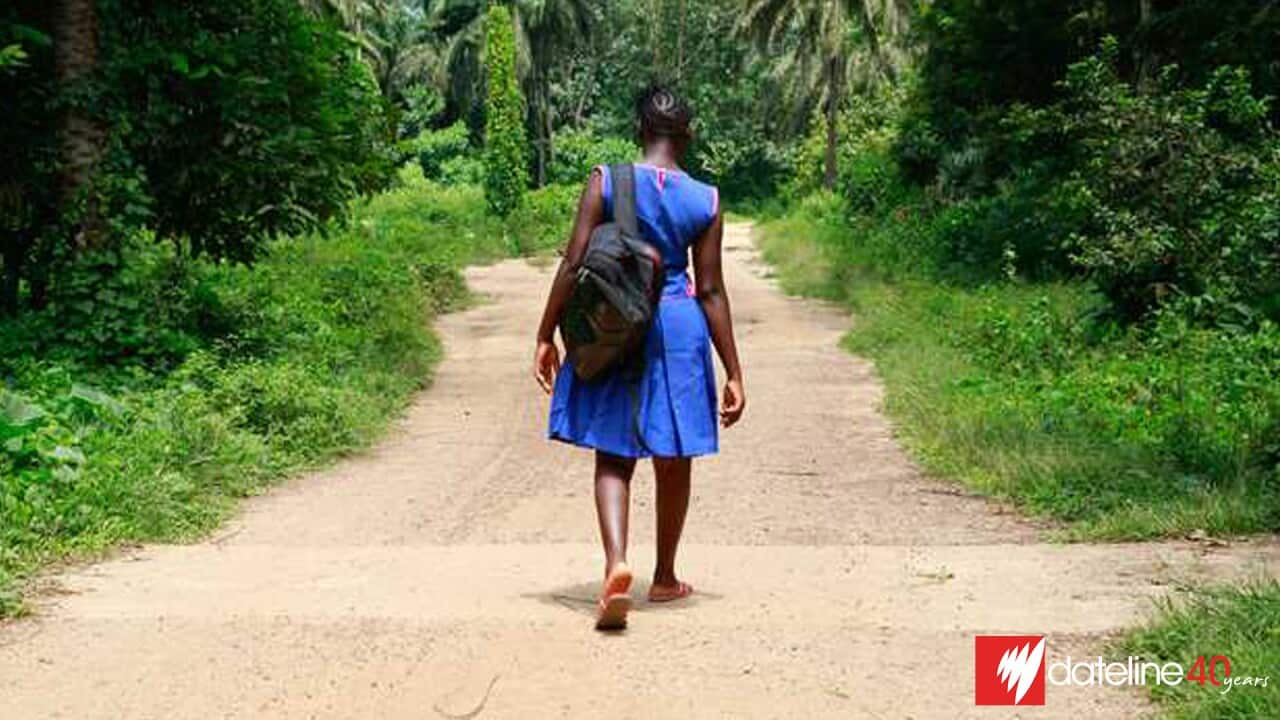When Kpemeh was 12 years old, the year her parents first urged her to marry, her home country of Sierra Leone was devastated by floods.
Torrential rain across West Africa and the Sahel region (a belt of land just below the Sahara desert) had swollen rivers to bursting, displacing tens of thousands of people, decimating livestock and destroying huge swaths of cultivated land.
The following year, in May 2018, the United Nations estimated that climate impacts had left 6.8 million people across the Sahel at risk of food insecurity – more than a third of them pastoralists and farmers like Kpemeh’s parents.
“The climate has changed and our parents rely on farming,” Kpemeh (not her real name), said. “Rain does not fall when it is supposed to fall.”
She was in the sixth grade when a man expressed interest in marrying her. She declined. But for her family, who were facing severe financial stress, the proposal offered the chance of respite.
The man said he would provide for Kpemeh; that he would pay for her school and books. Eventually, Kpemeh’s parents sat her down to inform her that they had arranged the marriage.
She was 15.

About two-thirds of child marriages around the world happen in regions with higher-than-average climate risks. Source: AP / Tsvangirayi Mukwazhi/AP
As floods, cyclones and droughts become more frequent and push more people into poverty, parents see marriage as a way of ensuring that their daughters will be provided for.
“We interviewed a lot of parents and a large percentage of them said, ‘We think it's the right thing to do. If you're struggling for money and food, and marrying your daughter can help get access to that food for her and for the rest of your family, that's the right decision,” said Gabrielle Szabo, co-head of policy, research and evidence at Save the Children UK.
A perfect storm
According to the that Szabo co-authored, about two-thirds of child marriages around the world happen in regions with higher-than-average climate risks — places like Africa, Central America and South Asia — and almost 9 million girls face extreme risk of climate disasters and child marriage every year.
That number is set to increase.
In Sierra Leone, where more than 50 per cent of people live below the poverty line, about a third of girls end up in child marriages.
Those numbers are even higher when looking at the West and Central African region overall, where four out of ten girls and young women, or the equivalent of nearly 60 million people, are married before the age of 18.

Climate is fuelling these desperate circumstances – but it’s also just one part of what Szabo described as a “perfect storm of risk factors” caused by the compounding impacts of natural disasters, poverty and conflict.
In countries such as Nigeria, less regular rainfall is triggering water disputes and forcing pastoralists to graze livestock in contested terrain, often leading to violent clashes. This farmer-herder conflict, which experts have flagged as the country’s “gravest security challenge”, exacerbates the factors that lead to child marriage.

The compounding impacts of natural disasters, poverty and conflict are creating a "perfect storm" for child marriage in nations across Africa. Source: AP / Brian Inganga
She believes the number of child brides in her area increased during periods of increased tensions, as more parents took their daughters out of school and married them off.
One of these was her friend, who later died in childbirth. Now Zaynab is advocating for greater awareness around the issue.
“Child marriage denies a girl of a childhood,” she said. “It disrupts her education, and it limits her opportunities as a human being.”
Dr Faith Mwangi-Powell, CEO of international NGO Girls Not Brides, told SBS Dateline that teen pregnancy is one of the more serious impacts of child marriages on young girls, particularly in rural and socially disadvantaged communities.
“When a girl is married at the age of 14 or whatever … they're still children themselves, so we have seen that when those girls get pregnant they suffer major health complications,” Mwangi-Powell said.
“We have even seen some maternal deaths for girls too, because of complications of pregnancy, because they're too young.”
Girls saving themselves
In some cases, however, it’s young girls themselves who are proposing marriages in a bid to help their families. Szabo, from Save The Children, cited a study conducted in food-insecure parts of Zimbabwe where girls had gone out and initiated their own marriages as part of what they viewed as their responsibility towards themselves, their siblings and their parents.

Four out of 10 girls are married before the age of 18 in West and Central Africa. Credit: Save the Children
In her view, such cases emphasise the need to have a more nuanced perspective on the issue of child marriage and to recognise that, contrary to some people’s assumptions, many of the girls who find themselves in these situations do in fact have the agency to weigh up the pros and cons.
As Szabo put it: “Girls are capable of making decisions, but they haven't got great options.”
Kpemeh decided to run, escaping her arranged marriage by fleeing home at the age of 15 and making contact with a Save the Children volunteer.
Now living with her uncle, she too has become an advocate, and is fighting to save other girls from becoming child brides.
“I shared my story to prevent my friends from experiencing the same,” she said. “I’ll only think about marriage when I’ve finished my education.”










